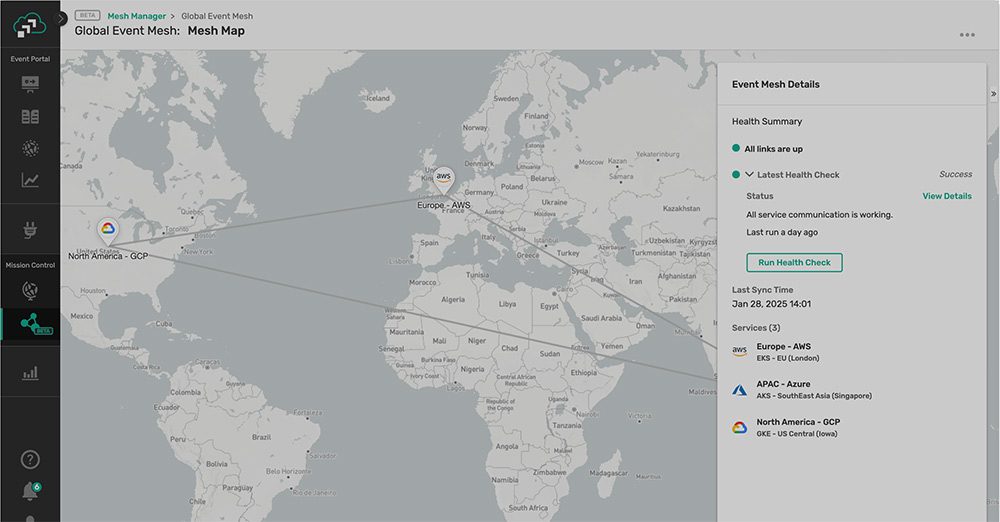Over time your applications will become more sophisticated, and more intelligent, and your infrastructure will be distributed across cloud, on-premises and edge environments. You’ll need a robust data distribution infrastructure that can efficiently route information across all environments, interfaces, and locations.
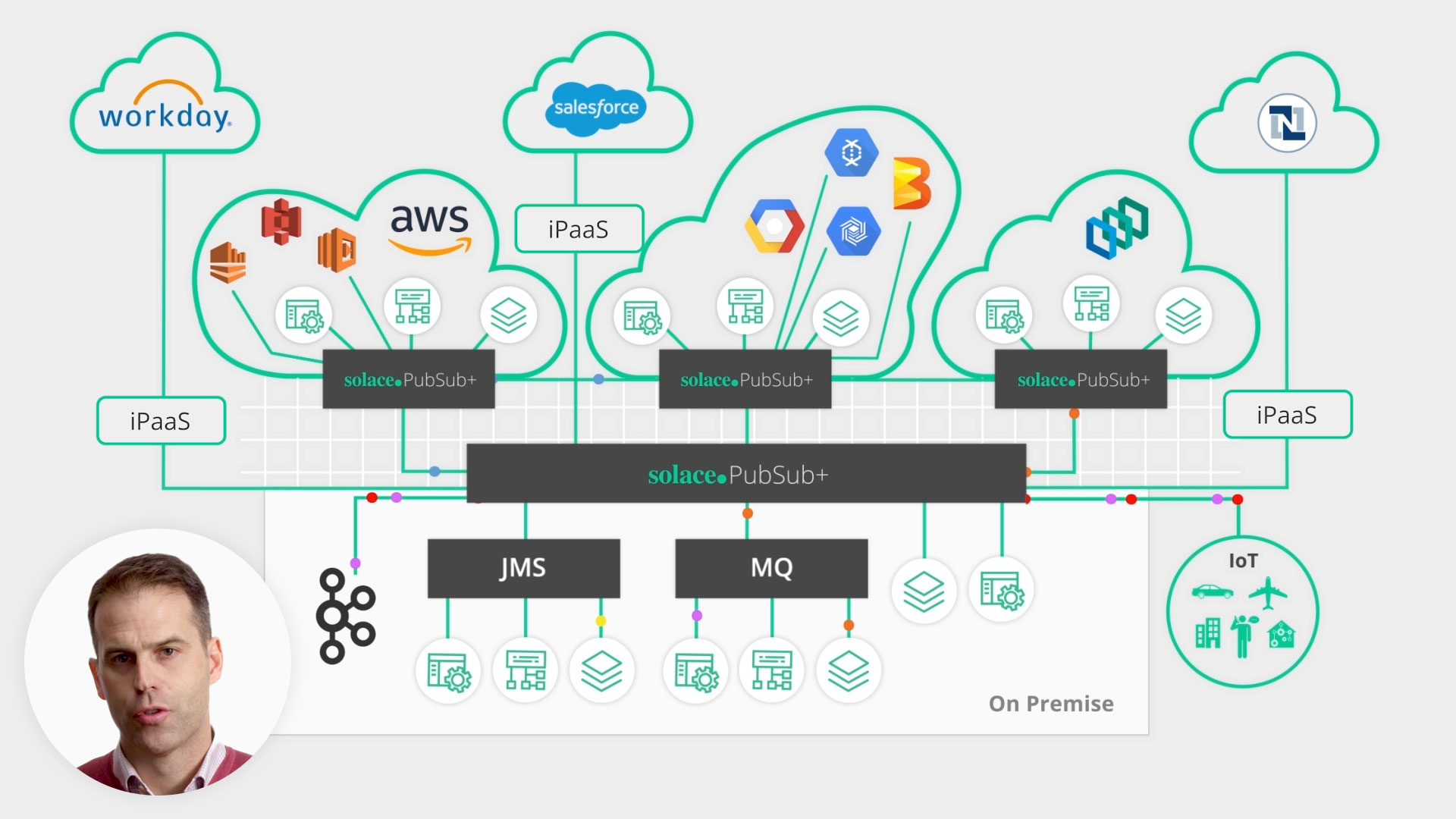
An event mesh is a network of event brokers that streams information to any and all applications, agents and devices that need it, no matter where they’re deployed, no matter what.
Business Benefits of an Event Mesh
- Make Data Available to Everyone: Expose your event streams to developers, decision makers and friendly third parties so they can quickly build new applications and use the data immediately.
- Unify Data Across Environments: Build and run your applications wherever you want, and dynamically shift workloads between cloud and on-prem environments.
- Move Data in Real-Time: Reduce latency and ensure that messages never get lost, even when there are network disruptions or application hiccups.
- Make Any Integration Possible: Rethink old-school point-to-point integration patterns by using events, and unlock the power of asynchronous, real-time, and one-to-many interactions.
Why Build an Event Mesh with Solace
Dynamic message routing (DMR) is a feature of Solace Event Broker that enables you to create an event mesh by linking event brokers within or between environments. DMR is a self-learning routing mechanism that automatically propagates subscriptions and events across Solace Event Brokers so your applications and devices can share information as if they were connected to the same event broker, without needing to know anything about what applications are creating or consuming the data.
Deliver Events as Efficiently as Possible
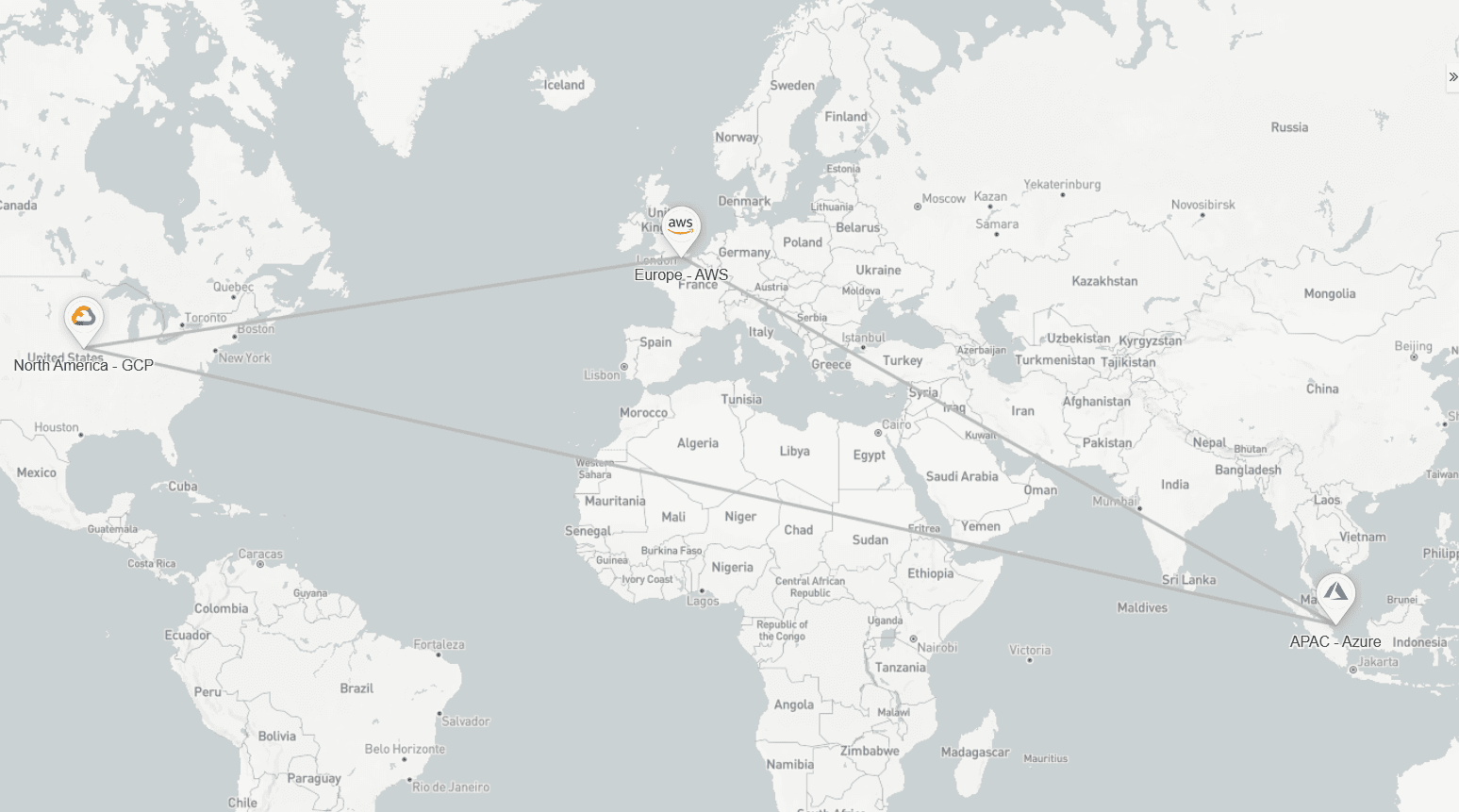 Solace-based event meshes always enable the most efficient and fastest possible delivery of information anywhere in the world…no matter what.
Solace-based event meshes always enable the most efficient and fastest possible delivery of information anywhere in the world…no matter what.
Make Connections Any Way You Want
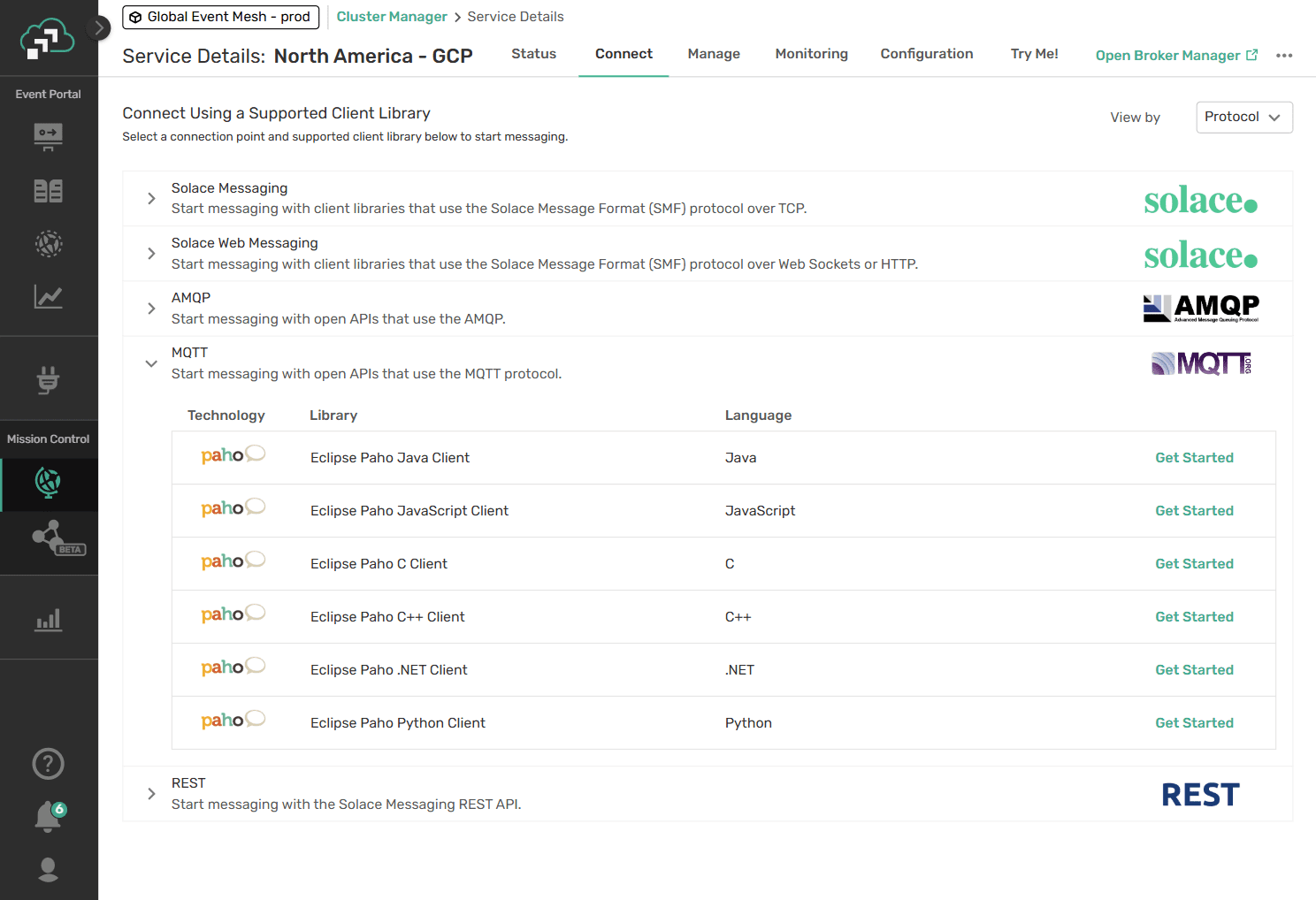
Add Endpoints without Losing Control
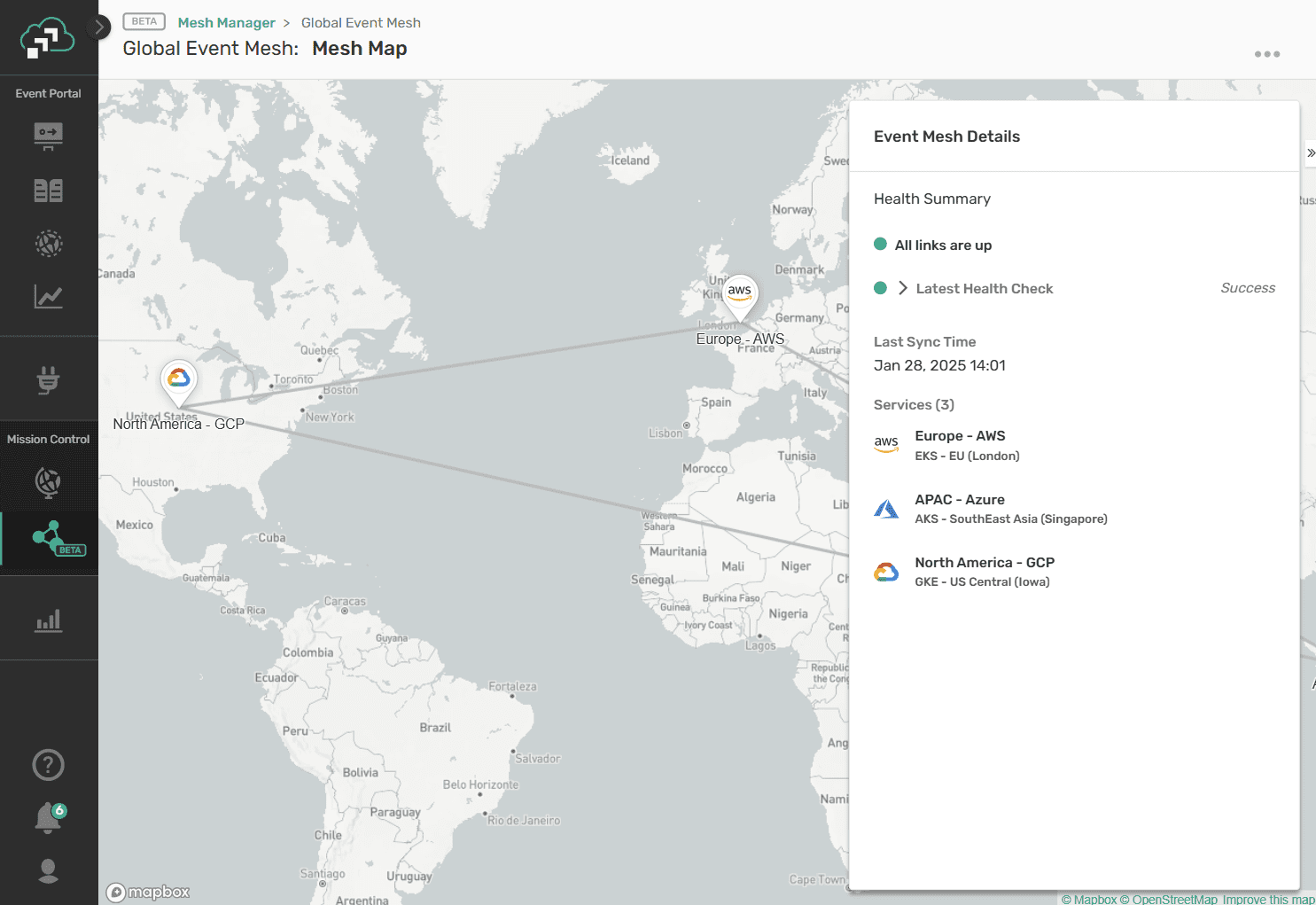
Other Advantages
- Business Continuity: DMR supports high availability (HA) and disaster recovery (DR) configurations to keep your event mesh running 24×7
- Easy to Implement: A configuration wizard called “Click to Connect” lets you establish DMR links between many Solace Event Brokers with a few mouse clicks, without needing to configure subscriptions on links in the mesh.
- WAN Efficiency: When interconnecting cloud providers and enterprise data centers over the WAN, bandwidth charges can easily get out of control. DMR reduces WAN costs and cloud egress costs by sending events over the WAN links only when a consumer on the other end is subscribed to them. DMR links can be compressed to further reduce bandwidth costs.
- Secure: DMR links support TLS encryption to secure your data (compressed or uncompressed) as it is sent between brokers.
Applications of an Event Mesh
You can use an event mesh to you scale capacity or link systems across environments.
Scaling Capacity within a Cloud or Datacenter
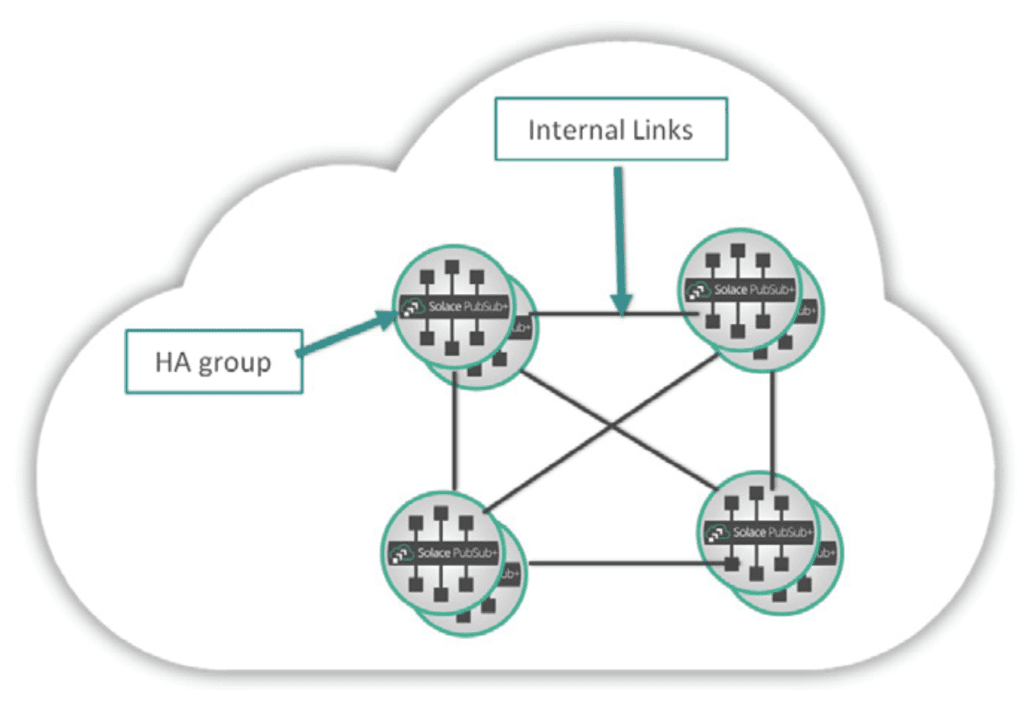
Enabling Data Flow Between Distributed Environments
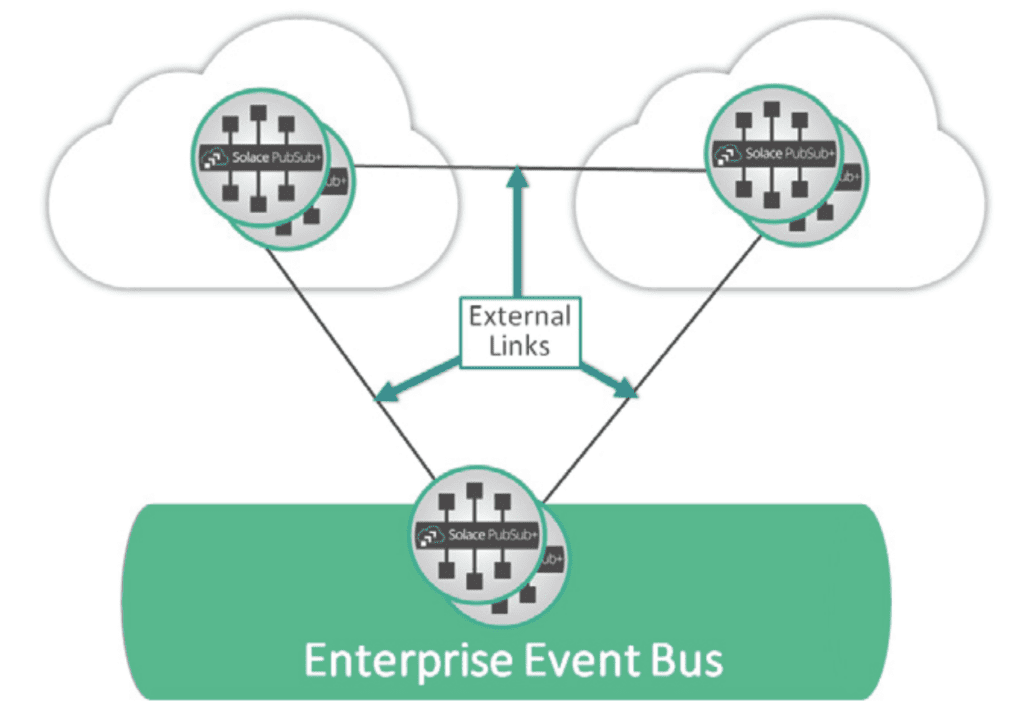
See How to Build an Event Mesh with Solace
Take an interactive tour of the PubSub+ platform, and learn how to build an event mesh in under 12 steps.
